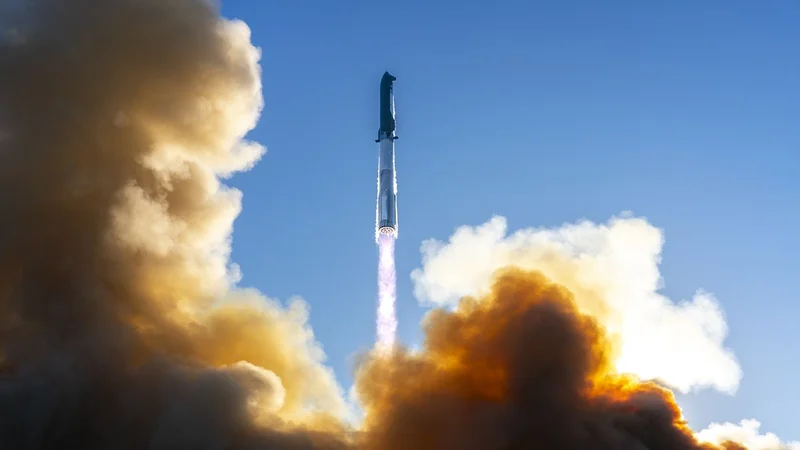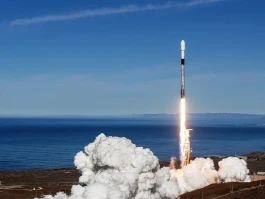The Unrecovered Asset: Why Starship's "Success" is the Wrong Metric
Another Starship has been sacrificed to the Indian Ocean. On Monday, SpaceX's 11th full-stack test vehicle thundered off its Texas launchpad, traced a perfect arc halfway around the globe, and then, as designed, was destroyed upon reentry. The booster, having done its job, executed a controlled descent into the Gulf of Mexico. Nothing was recovered. On screens in Hawthorne, however, gigabytes of telemetry were.
In Launch Control, employees cheered. SpaceX announcer Dan Huot declared, "Hey, welcome back to Earth, Starship." A strange welcome for a vehicle now dissolving into a saline solution. Even Elon Musk, who usually watches from inside, stepped out to see the launch, calling it "much more visceral."
This is the public-facing narrative: a triumphant test flight, another box checked on the long road to Mars and the Moon. SpaceX launches 11th test flight of its mega Starship rocket with another win. NASA’s acting administrator praised it as a “major step” toward landing astronauts on the lunar south pole. And from a purely operational perspective, they aren’t wrong. The rocket (the largest launch vehicle ever constructed at 403 feet) did what it was supposed to do. But focusing on the success or failure of a single flight is a fundamental misreading of the data. It’s like judging a hedge fund’s entire quarter based on the performance of a single stock on a single day. The real story isn't the outcome of the flight; it's the ruthless efficiency of the data acquisition process it represents.
What we are witnessing is not a series of rocket launches. It is a series of high-altitude, high-velocity data collection experiments disguised as rocket launches. The hardware is the temporary, disposable vessel for the actual product: telemetry. The booster, the spacecraft, the engines—they are, for now, fantastically expensive hard drives designed for a single-use data transfer. When Huot says "welcome back," he's not talking to a piece of stainless steel. He's talking to the data stream it just delivered.
An Exercise in Iteration, Not Execution
Let’s be precise. This was the 11th test flight. The previous successful flight was in August. The cycle time between these major tests is shrinking, while the complexity of the objectives is increasing. The booster splashdown is becoming routine. The spacecraft is now performing complex maneuvers during reentry. The entire flight lasted about an hour—just over 65 minutes, to be exact. This isn't a linear progression; it's a compounding one.

I've looked at hundreds of corporate growth projections, and the pattern here is familiar. It mirrors the relentless, iterative cycle of software development, not traditional aerospace engineering. The old model, perfected by NASA and its contractors, was to test every component to its breaking point on the ground to ensure the final product wouldn't fail in flight. It was a waterfall development model applied to hardware, resulting in decade-long timelines and astronomical costs. SpaceX has inverted this. They are using an agile methodology. Build the minimum viable rocket, fly it, see where the data shows it breaking, and fix it in the next build.
This approach is only possible if you’ve fundamentally changed the economics of manufacturing. The real innovation at Starbase isn't the rocket itself; it's the factory that can produce these rockets at a rate and cost that makes spectacular, data-rich failures an acceptable, and even desirable, part of the R&D budget. The rocket is a sunk cost the moment it's stacked. Its only remaining value is in the data it can generate before its inevitable destruction. So, is the primary key performance indicator the success of the flight, or the cost per terabyte of telemetry returned?
This is the part of the analysis that I find genuinely puzzling from a traditional business perspective. The public and even NASA celebrate the flight's completion, but I suspect the internal SpaceX post-mortem focuses almost exclusively on the anomalies. A perfect flight with no surprises might actually be a less valuable outcome from an engineering standpoint, as it provides fewer data points on the vehicle's ultimate performance limits. Where were the unexpected vibrations? Which sensor readings deviated from the model? What was the single weakest link in the chain? That's the information that makes the next flight better.
The True Asset is the Assembly Line
The commentary from NASA, while supportive, feels like a lagging indicator. Praising a single launch misses the forest for the trees. The agency needs Starship to land on the Moon, a mission that requires a fully reusable vehicle that can be refueled in orbit—a task requiring dozens of launches. The success of Flight 11 is a footnote. The real question is: how quickly can Flight 12, 13, and 14 be built, stacked, and launched?
The ultimate competitive advantage SpaceX is building isn't a rocket. It's an assembly line and a rapid iteration engine. While competitors spend years designing and perfecting a single vehicle, SpaceX is building a system that treats the vehicles themselves as disposable drafts. It's like a writer churning out and discarding ten pages to get one perfect paragraph. The genius isn't in the final paragraph; it's in the discipline and low cost of the drafting process.
So, as we watch the celebratory clips, the real metric to track isn't the altitude or the splashdown location. It’s the number of days between major test flights. It's the number of Raptors produced per week. It's the implied cost of writing off a 403-foot-tall rocket in the name of data. Because in this model, the unrecovered hardware isn't a loss. It's the price of the tuition.

